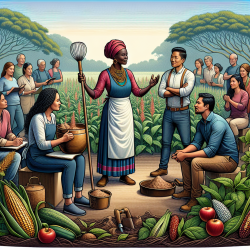Introduction
In the realm of special education, understanding the diverse needs of students and their communities is crucial. One such pressing issue is food insecurity, particularly within Aboriginal communities in urban and regional Australia. The research article titled "Murradambirra Dhangaang (make food secure): Aboriginal community and stakeholder perspectives on food insecurity in urban and regional Australia" provides valuable insights that can empower practitioners to improve their skills and make a significant impact.
Understanding the Research
The study conducted semi-structured interviews with 44 participants, including Aboriginal community members and stakeholders from food relief agencies, schools, and government bodies. The research identified five core areas impacting food security: financial disadvantage, gaps in the local food system, limitations of non-Aboriginal food relief services, ongoing impacts of colonization, and maintaining family, cultural, and community commitments.
Implementing Research Outcomes
Practitioners can leverage the findings of this study to enhance their skills and better support their communities:
- Address Financial Disadvantage: Develop programs that provide financial literacy education and support, helping families manage budgets and access available resources.
- Improve Local Food Systems: Advocate for increased investment in local infrastructure to ensure the availability of healthy food options in Aboriginal communities.
- Enhance Food Relief Services: Collaborate with food relief organizations to create culturally sensitive programs that address the unique needs of Aboriginal families.
- Recognize Cultural Impacts: Integrate Aboriginal values and culture into program development, ensuring that initiatives are respectful and inclusive of traditional practices.
- Foster Community Engagement: Encourage community-led initiatives that promote food security, such as community gardens and cooking workshops.
Encouraging Further Research
While this study provides a foundational understanding of food insecurity in Aboriginal communities, further research is essential. Practitioners are encouraged to engage with local communities, gather data, and develop tailored interventions that address specific challenges. By fostering partnerships with Aboriginal organizations, practitioners can co-design culturally appropriate programs that enhance food security and overall well-being.
Conclusion
Addressing food insecurity in Aboriginal communities requires a multifaceted approach that considers socio-economic, environmental, systemic, and cultural factors. By implementing the outcomes of the "Murradambirra Dhangaang" study, practitioners can improve their skills and make a meaningful impact on the communities they serve. For those interested in delving deeper into the research, the original paper offers a comprehensive exploration of the issues and potential solutions.
To read the original research paper, please follow this link: Murradambirra Dhangaang (make food secure): Aboriginal community and stakeholder perspectives on food insecurity in urban and regional Australia.










